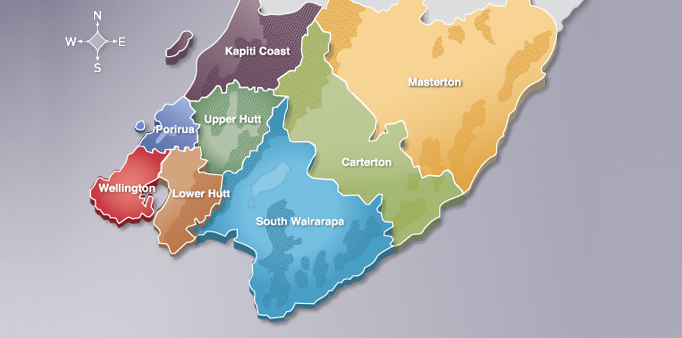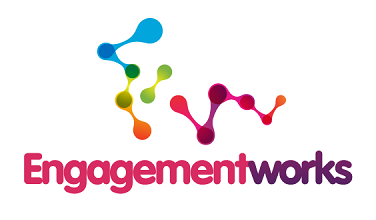Case Study: Wellington region local government reform
The Challenge/Background
Some Wellington local government councils are keen to see the nature of local governance in the area restructured. Behind this is a desire to improve the efficiency and effectiveness of council services and provide stronger and more cohesive leadership for the region’s future. Recent reform of local government in the Auckland region appears to have added impetus.
At a time when more than ever before society demands more say in decisions that affect peoples’ lives, the processes adopted by local governments for the reform of local government in the Wellington Region make an interesting case study.
It is fascinating to see how local councils trumpet their consultation and engagement processes based on the volume of submissions received, which in reality are very low when compared with the size of the affected communities.
With a population of 487,700 (2011) and total submissions of 3,449 from the four consultations run so far, the public voice – if each submission is treated as a different person – represents a response rate of less than 1 per cent, which is hardly significant by any measure, especially given the importance of the issues.
The Strategy
The model of community engagement preferred by public bodies in New Zealand can best be described as “announce and defend”, where any consultation occurs just before a final decision is made. This is not inclusive, involves little if any listening by the organisation concerned and depletes social capital to the point where people simply ignore calls for input or comment as being a complete waste of time and energy. The Wellington local government reform issue has, to date, involved four separate lead groups which, with some variation, have all used the “announce and defend” model to connect with the regional community.
What makes this whole process difficult for the average citizen is the lack of any unity or cohesion. The trigger appears to be the reform of local government in Auckland. It appears to have galvanised the Wellington Mayoral Forum into action when in 2010 they commissioned PriceWaterhouseCoopers to carry out a review, including options.
There was no public consultation in this review until after the final report had been delivered and considered by the Wellington Mayoral Forum. It is interesting that in three of the nine districts involved there were fewer than five submissions from each, in fact only seven in all. This does not say much for the quality of the engagement process used.
Next was the emergence of the Wairarapa Governance Review Working Party in February 2012, focused solely on local government in Wairarapa. It commissioned Morrison Low to undertake a study of options for Wairarapa and its report with options (different from the PwC report) was completed in September 2012, after which public consultation on the options took place culminating in an application to the Local Government Commission in May 2013. Again consultation focused only on the specific options on which a decision was pending.
There was no opportunity for the community to have input into defining the problem that triggered this review. Based on the population of the three districts affected (40,570) the 1158 responses (about 2.8 per cent) is not a representative sample.
Close behind was the establishment in May 2012 of the Local Government Review Panel by Greater Wellington Regional Council and Porirua City Council. The panel’s issues paper was put out for public comment in July 2012. This was the first and only time in the entirety of the various processes that the community had an opportunity to have input on defining the problems.
Unfortunately, there was no further consultation before the panel delivered its report containing its recommended new structure to the sponsoring councils. There were only 234 submissions made to the review panel, which also held public meetings around the region.
In January 2013 the fourth group, the Regional Reform Working Party, comprising four councils, was established to develop a preferred model with or without Wairarapa. The working party consulted on two options during April and May and received 1892 submissions. In their latest news release they advised that following analysis of the submissions the next step could be an application to the Local Government Commission.
But that wasn't the end of it because Wellington City Council has decided to go it alone and proposed its own model for local government in the Wellington Region. There has been no consultation about that model.
Outcomes
Five separate groups, three studies, and multiple options all without any one really knowing what problem should be fixed.
Any final decision for change will be made by the Local Government Commission. As at July 2013 the LGC had received a combined submission from the three Wairarapa councils advocating the establishment of a Wairarapa unitary authority, a proposal from Wellington City and also a combined submission from the Wellington Regional Council and Porirua City. Further council submissions are possible from Kapiti Coast and possibly a combined submission from Hutt City and Upper Hutt councils.
Lessons
This is an example of how not to connect with the community. A better way would have been to have a unified single group lead the review with a clearly identified process involving the community at each stage.
Some Wellington local government councils are keen to see the nature of local governance in the area restructured. Behind this is a desire to improve the efficiency and effectiveness of council services and provide stronger and more cohesive leadership for the region’s future. Recent reform of local government in the Auckland region appears to have added impetus.
At a time when more than ever before society demands more say in decisions that affect peoples’ lives, the processes adopted by local governments for the reform of local government in the Wellington Region make an interesting case study.
It is fascinating to see how local councils trumpet their consultation and engagement processes based on the volume of submissions received, which in reality are very low when compared with the size of the affected communities.
With a population of 487,700 (2011) and total submissions of 3,449 from the four consultations run so far, the public voice – if each submission is treated as a different person – represents a response rate of less than 1 per cent, which is hardly significant by any measure, especially given the importance of the issues.
The Strategy
The model of community engagement preferred by public bodies in New Zealand can best be described as “announce and defend”, where any consultation occurs just before a final decision is made. This is not inclusive, involves little if any listening by the organisation concerned and depletes social capital to the point where people simply ignore calls for input or comment as being a complete waste of time and energy. The Wellington local government reform issue has, to date, involved four separate lead groups which, with some variation, have all used the “announce and defend” model to connect with the regional community.
What makes this whole process difficult for the average citizen is the lack of any unity or cohesion. The trigger appears to be the reform of local government in Auckland. It appears to have galvanised the Wellington Mayoral Forum into action when in 2010 they commissioned PriceWaterhouseCoopers to carry out a review, including options.
There was no public consultation in this review until after the final report had been delivered and considered by the Wellington Mayoral Forum. It is interesting that in three of the nine districts involved there were fewer than five submissions from each, in fact only seven in all. This does not say much for the quality of the engagement process used.
Next was the emergence of the Wairarapa Governance Review Working Party in February 2012, focused solely on local government in Wairarapa. It commissioned Morrison Low to undertake a study of options for Wairarapa and its report with options (different from the PwC report) was completed in September 2012, after which public consultation on the options took place culminating in an application to the Local Government Commission in May 2013. Again consultation focused only on the specific options on which a decision was pending.
There was no opportunity for the community to have input into defining the problem that triggered this review. Based on the population of the three districts affected (40,570) the 1158 responses (about 2.8 per cent) is not a representative sample.
Close behind was the establishment in May 2012 of the Local Government Review Panel by Greater Wellington Regional Council and Porirua City Council. The panel’s issues paper was put out for public comment in July 2012. This was the first and only time in the entirety of the various processes that the community had an opportunity to have input on defining the problems.
Unfortunately, there was no further consultation before the panel delivered its report containing its recommended new structure to the sponsoring councils. There were only 234 submissions made to the review panel, which also held public meetings around the region.
In January 2013 the fourth group, the Regional Reform Working Party, comprising four councils, was established to develop a preferred model with or without Wairarapa. The working party consulted on two options during April and May and received 1892 submissions. In their latest news release they advised that following analysis of the submissions the next step could be an application to the Local Government Commission.
But that wasn't the end of it because Wellington City Council has decided to go it alone and proposed its own model for local government in the Wellington Region. There has been no consultation about that model.
Outcomes
Five separate groups, three studies, and multiple options all without any one really knowing what problem should be fixed.
Any final decision for change will be made by the Local Government Commission. As at July 2013 the LGC had received a combined submission from the three Wairarapa councils advocating the establishment of a Wairarapa unitary authority, a proposal from Wellington City and also a combined submission from the Wellington Regional Council and Porirua City. Further council submissions are possible from Kapiti Coast and possibly a combined submission from Hutt City and Upper Hutt councils.
Lessons
This is an example of how not to connect with the community. A better way would have been to have a unified single group lead the review with a clearly identified process involving the community at each stage.

